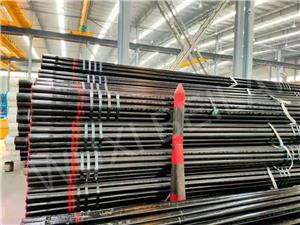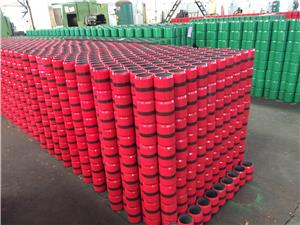Detailed explanation of the application of finned tubes in the oil and gas industry
As an efficient heat exchange element, finned tubes play a vital role in the oil and gas industry. The process flow of this industry is complex, involving high temperature, high pressure and corrosive environment, and the requirements for heat exchange equipment are extremely strict. Fin tubes have become an indispensable key component in the oil and gas industry due to their excellent heat transfer performance and durability. This article will introduce in detail the specific applications, material selection requirements and advantages of finned tubes in the oil and gas industry.
1. Specific applications of finned tubes in the oil and gas industry
1.1 Heating furnace
In the oil and gas industry, heating furnaces are used to increase the temperature of oil and gas to facilitate subsequent processing and handling. Fin tubes play a key heat exchange role in the heating furnace and improve heat exchange efficiency by increasing the outer surface area of the tubes.
Function: Heating the oil and gas fluid inside the fin tube by burning natural gas or other fuels to bring it to the required temperature.
Advantages: Fin tubes can significantly improve heat exchange efficiency, reduce fuel consumption, and improve the efficiency of the heating furnace.
1.2 Air preheater
The air preheater is used to increase the temperature of the air entering the combustion device, thereby improving combustion efficiency and reducing fuel consumption.
Function: Preheat the air entering the combustion chamber by recovering the heat in the exhaust gas.
Advantages: The finned tube has a compact structure and excellent thermal conductivity. It can effectively recover the heat of exhaust gas and improve the overall thermal efficiency of the system.
1.3 Heat exchanger
Heat exchangers are widely used in the oil and gas industry for heat exchange between different media.
Function: Heat exchange between different media through fin tubes, such as cooling petroleum products, heating natural gas, etc.
Advantages: The efficient heat transfer performance of finned tubes makes the heat exchange process faster and more uniform, adapts to high temperature and high pressure environments, and has strong corrosion resistance.
1.4 Condenser
Condensers play an important role in natural gas liquefaction and petroleum refining processes.
Function: Condensing gaseous hydrocarbons into liquid state through finned tubes for easy transportation and storage.
Advantages: Fin tubes greatly improve condensation efficiency, reduce energy consumption, and reduce operating costs.
2. Material selection requirements for finned tubes in the oil and gas industry
2.1 Thermal conductivity
Requirements: Materials with high thermal conductivity can quickly transfer heat and improve heat exchange efficiency.
Recommended materials: Copper and aluminum are often used in high-efficiency heat exchange equipment due to their excellent thermal conductivity.
2.2 Corrosion resistance
Requirements: There are many corrosive media in the process of oil and gas extraction and processing, and the finned tubes are required to have good corrosion resistance.
Recommended materials: Stainless steel, titanium alloys and nickel-based alloys perform well in corrosive environments and extend equipment life.
2.3 Mechanical strength
Requirements: Oil and gas industry equipment often operates under high pressure conditions, and finned tubes must have sufficient mechanical strength to ensure safety.
Recommended materials: Carbon steel and stainless steel are widely used in high-voltage equipment due to their high strength and durability.
2.4 High temperature resistance
Requirements: When working in a high temperature environment, the finned tube needs to maintain structural stability without deformation or failure.
Recommended materials: High temperature resistant materials such as stainless steel and titanium alloy can operate stably for a long time under high temperature conditions.
3. Advantages of finned tubes in the oil and gas industry
3.1 Improve heat exchange efficiency
Fin tubes significantly improve heat exchange efficiency by increasing the heat exchange area. Especially in heating furnaces and heat exchangers, it can quickly transfer heat and save energy.
3.2 Extend equipment life
The finned tubes are made of corrosion-resistant and high-temperature-resistant materials, which can operate in harsh environments for a long time, reduce equipment maintenance frequency and replacement costs, and extend the overall service life of the equipment.
3.3 Reduce operating costs
Efficient heat exchange performance and excellent durability reduce energy consumption and maintenance costs, reduce equipment operating costs, and improve economic benefits.
3.4 Adapt to various complex working conditions
Fin tubes are adapted to a variety of complex working conditions in the oil and gas industry, including high temperature, high pressure and corrosive environments, ensuring the stable operation of equipment under various extreme conditions.




